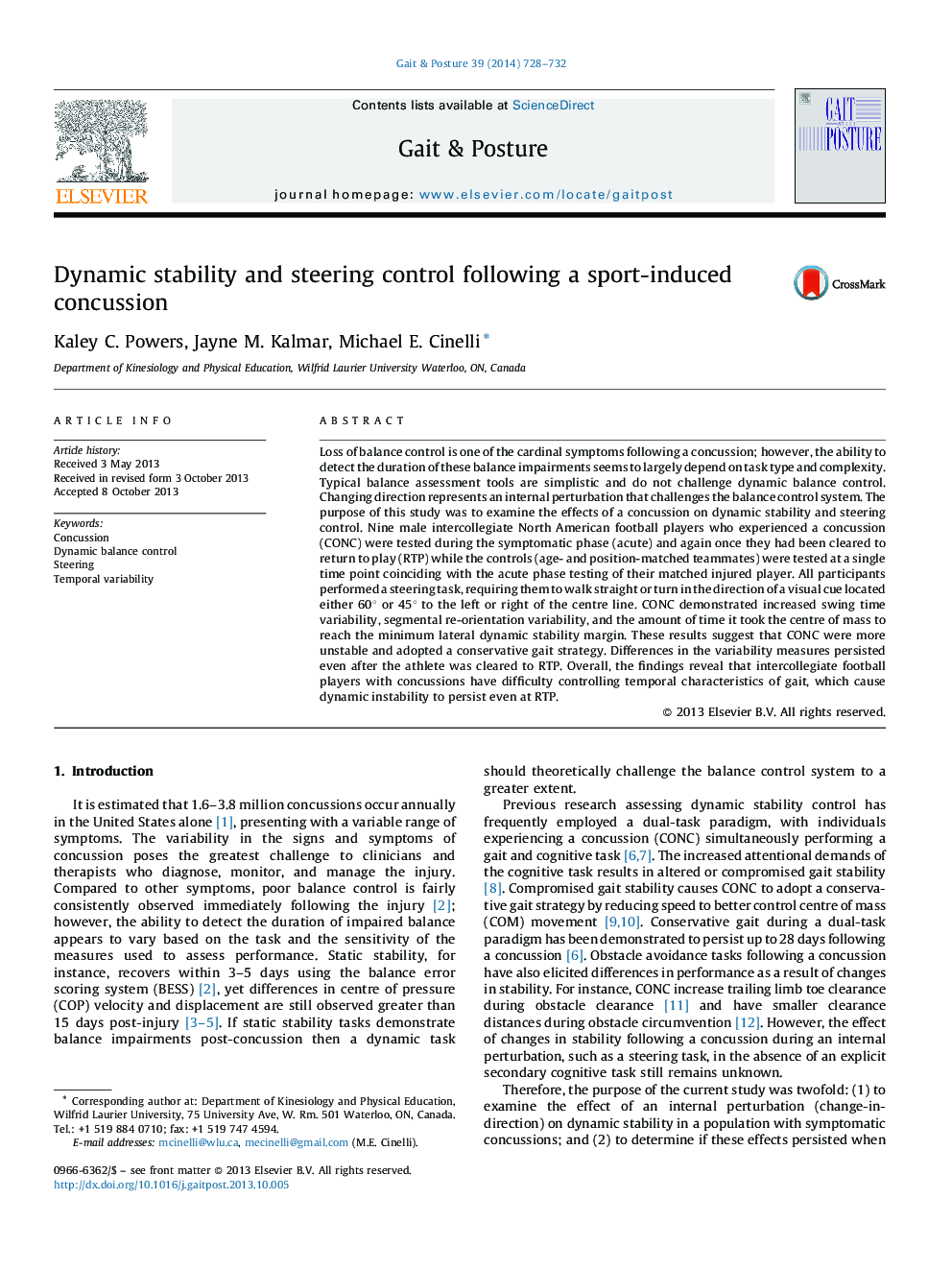| کد مقاله | کد نشریه | سال انتشار | مقاله انگلیسی | نسخه تمام متن |
|---|---|---|---|---|
| 6206381 | 1265646 | 2014 | 5 صفحه PDF | دانلود رایگان |
- Used steering task to determine dynamic balance deficits.
- Football players with concussions were tested during acute phase and at return-to-play.
- Increase in temporal variability measures and conservative gait post-concussion.
- Balance evaluations need to challenge individuals with concussions to exploit deficits.
Loss of balance control is one of the cardinal symptoms following a concussion; however, the ability to detect the duration of these balance impairments seems to largely depend on task type and complexity. Typical balance assessment tools are simplistic and do not challenge dynamic balance control. Changing direction represents an internal perturbation that challenges the balance control system. The purpose of this study was to examine the effects of a concussion on dynamic stability and steering control. Nine male intercollegiate North American football players who experienced a concussion (CONC) were tested during the symptomatic phase (acute) and again once they had been cleared to return to play (RTP) while the controls (age- and position-matched teammates) were tested at a single time point coinciding with the acute phase testing of their matched injured player. All participants performed a steering task, requiring them to walk straight or turn in the direction of a visual cue located either 60° or 45° to the left or right of the centre line. CONC demonstrated increased swing time variability, segmental re-orientation variability, and the amount of time it took the centre of mass to reach the minimum lateral dynamic stability margin. These results suggest that CONC were more unstable and adopted a conservative gait strategy. Differences in the variability measures persisted even after the athlete was cleared to RTP. Overall, the findings reveal that intercollegiate football players with concussions have difficulty controlling temporal characteristics of gait, which cause dynamic instability to persist even at RTP.
Journal: Gait & Posture - Volume 39, Issue 2, February 2014, Pages 728-732
